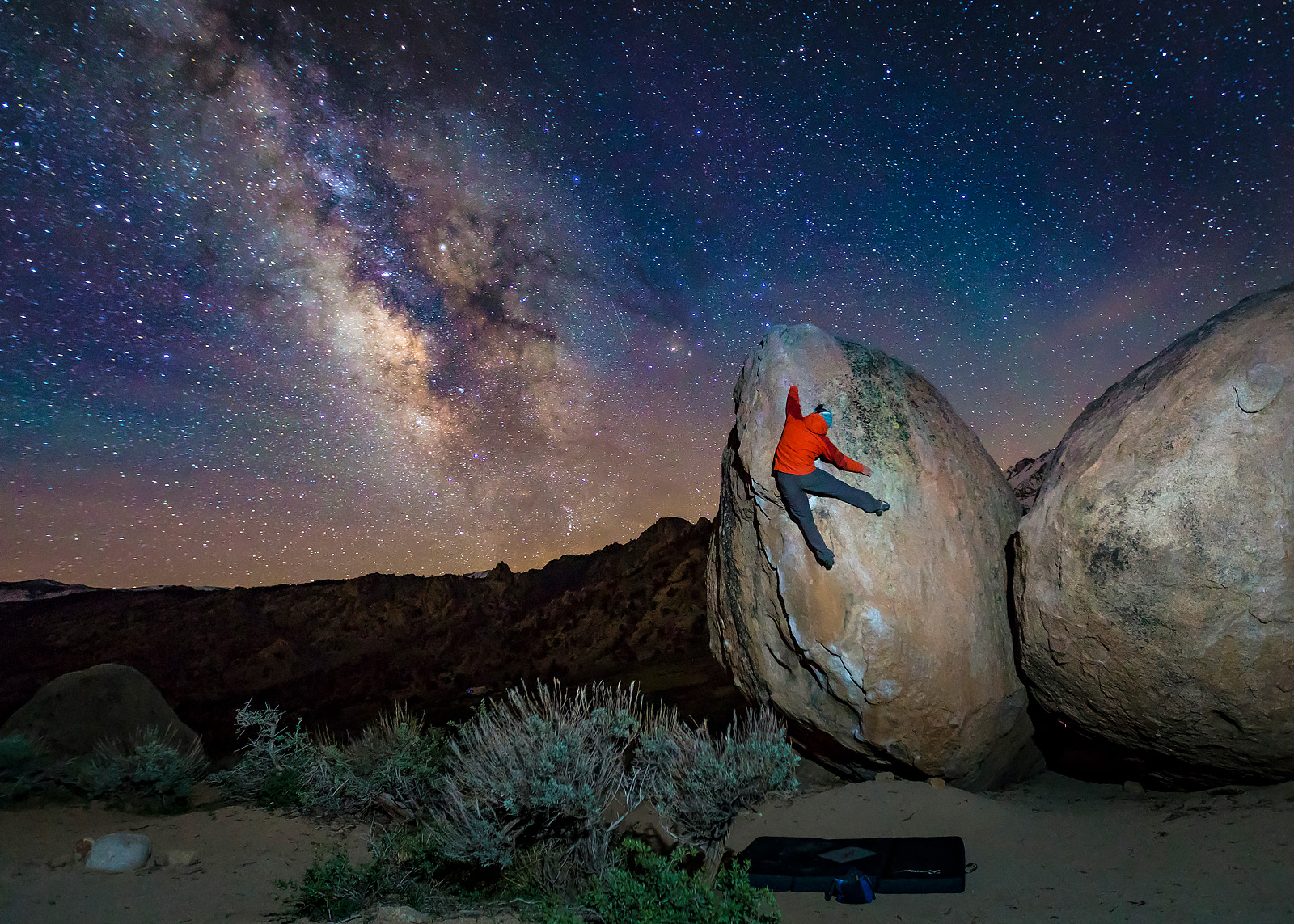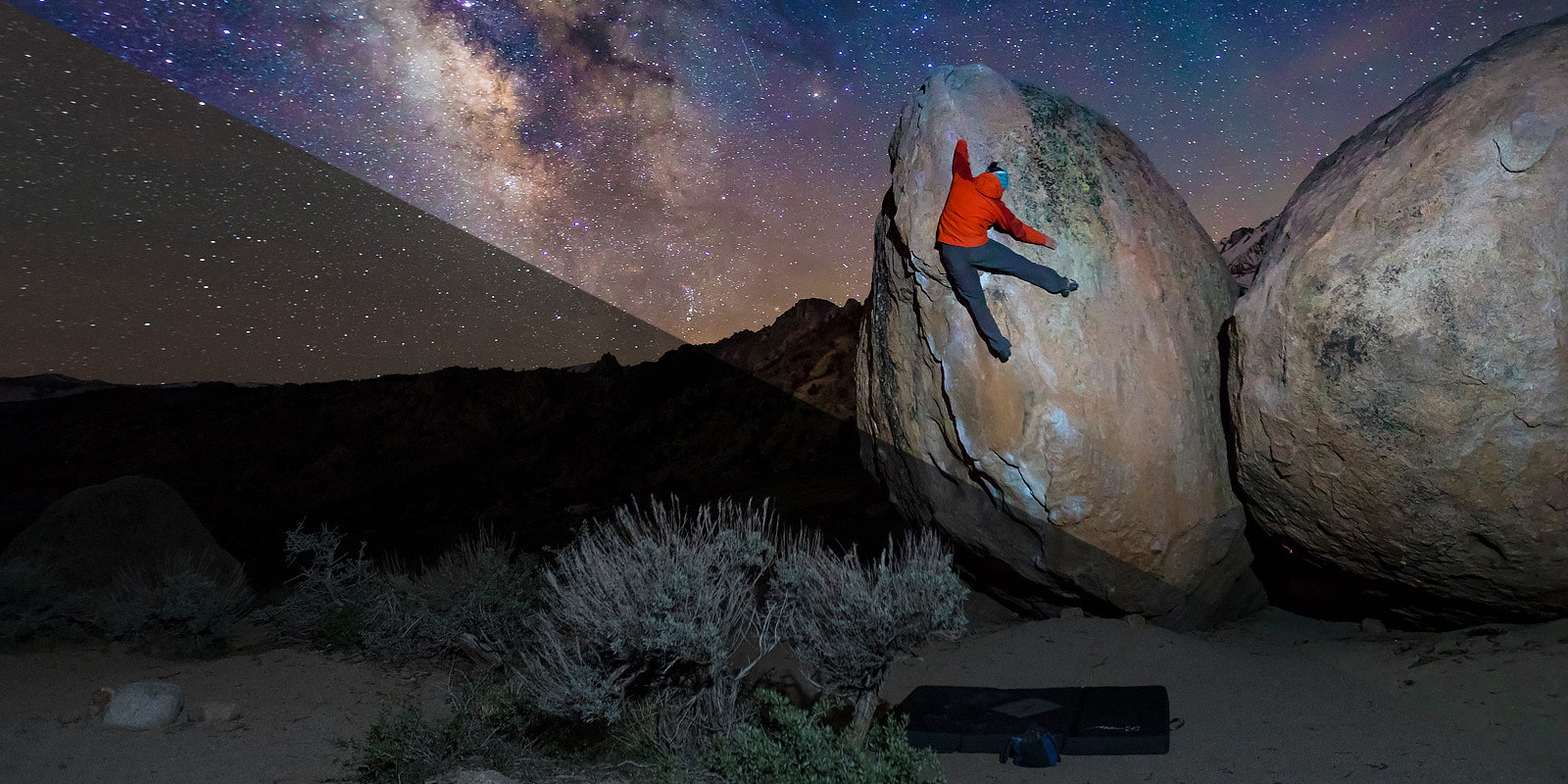Behind the photo: night bouldering
Hello! Today, I’m going to tell you how I took this photo. The main point is that this is a single shot, not a composite image. It wasn’t made from parts of different pictures, which makes this photograph challenging to capture.
Why? Well, I’ve taken many long-exposure photos before, and capturing the Milky Way isn’t difficult on its own. However, in most cases, the objects in the photo don’t move. To capture the stars, you need an exposure of about 20-30 seconds, and all objects—like tents, boulders, or trees—must remain still. Otherwise, they’ll appear blurry.
But as you can see, there’s a person in the photo. And he’s not standing still; he’s climbing a boulder. Asking him to stay perfectly still for 30 seconds would be impossible.

So, I had two main questions: How could I freeze the climber in the photo and light up the boulder at the same time? I started thinking about how to solve this issue. I could use a flashlight to light-paint and bring the foreground out of the darkness, but that wouldn’t solve the first problem—freezing the climber’s motion.
I decided to use a flash. Normally, a flash doesn’t work well for photos like this because even at the lowest power, it produces too much light. So, I used just the pilot light, which is typically used for testing flashes and provides only a minimal amount of light.
We spent a few days preparing. On the first day, we found the boulder and tested different positions that would look good in the photo. I also figured out the time when the Milky Way would be in the right spot for the shot.
We arrived at the location around 2 a.m. and got to work. I set up the camera and adjusted all the settings to capture the Milky Way.

Then I tested the flash to figure out which direction I needed to point it to ensure the foreground received the right amount of light.

After that, my friend started climbing up the boulder while I illuminated his path with a regular flashlight. Once he reached the right spot, I turned off the flashlight, started the camera, triggered the pilot light on the flash, and my friend quickly jumped down and ran out of the frame while the camera captured the rest of the scene.

We repeated the process a few times, but not too many, as it wasn’t easy for my friend to climb the route repeatedly in the dark. Plus, the temperature was freezing!
When I got home, I did my usual “Milky Way” post-processing, which included adjusting the color temperature, saturation, contrast, and other typical tweaks for this type of photo.

In my next blog post, I’ll dive deeper into the technical details and nuances of shooting this kind of photo, as well as the finer aspects of post-processing.
Thanks for reading! I hope you enjoyed the story! And a huge shoutout to Kostya Garmash for his help and posing—you rock, man!
Subscribe to get updates
Subscribe and get 5 HD wallpapers for mobile and desktop devices
Thank you!
Something went wrong 🙁
